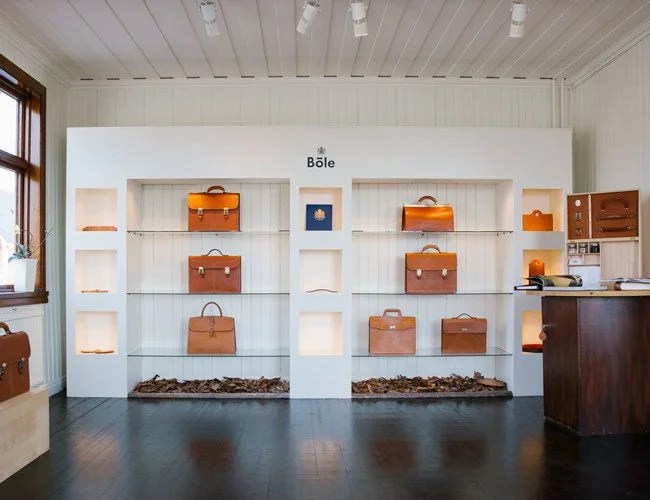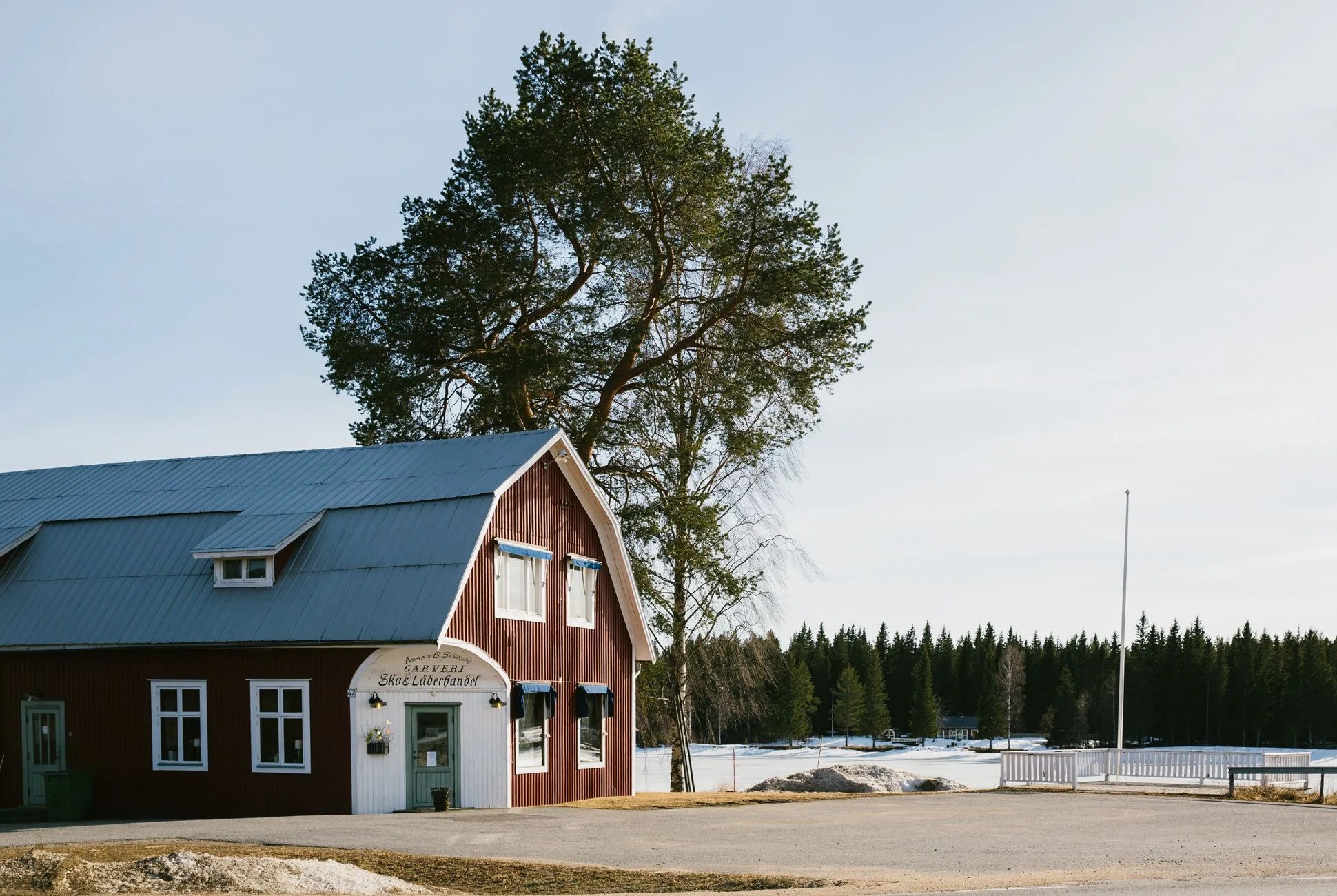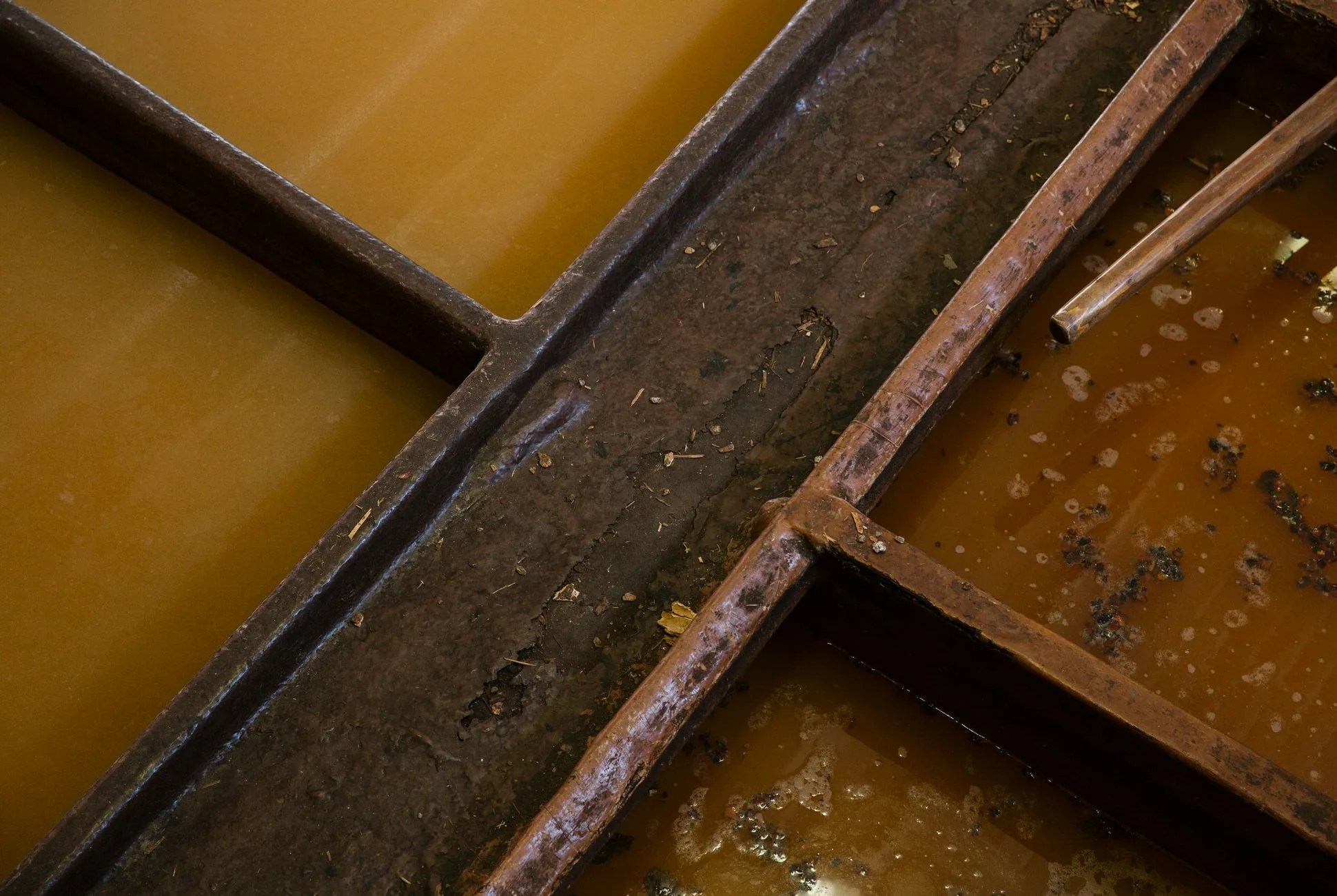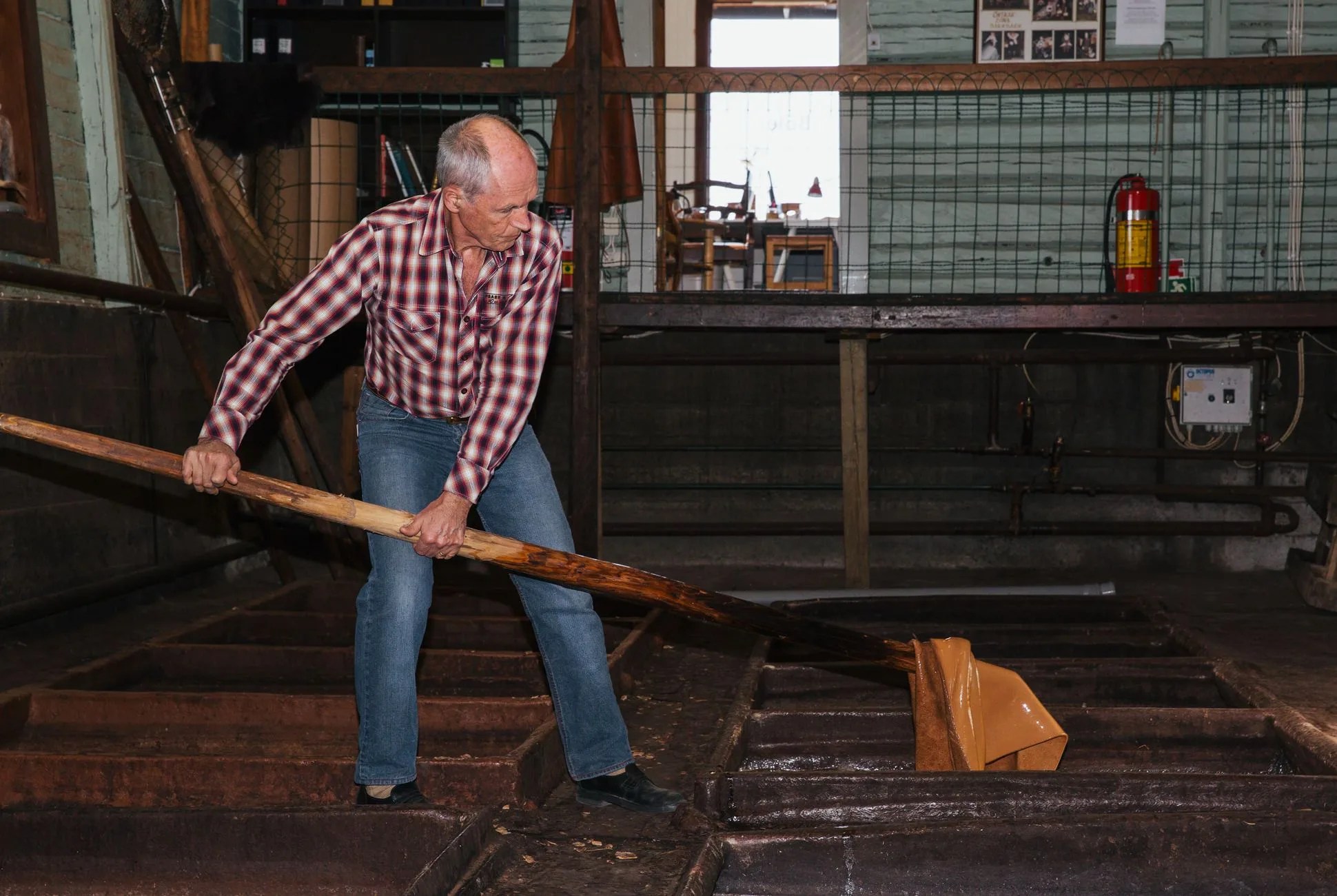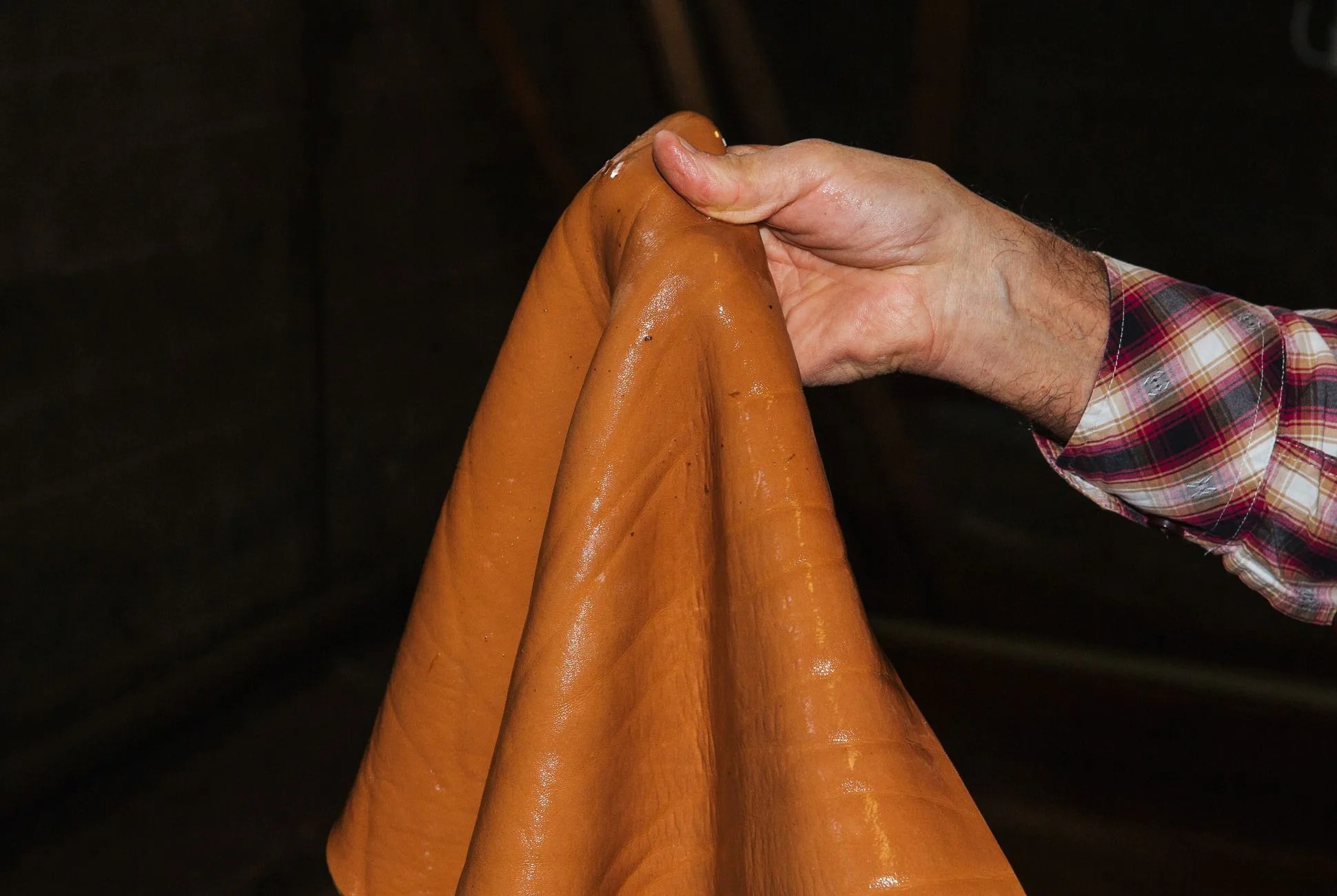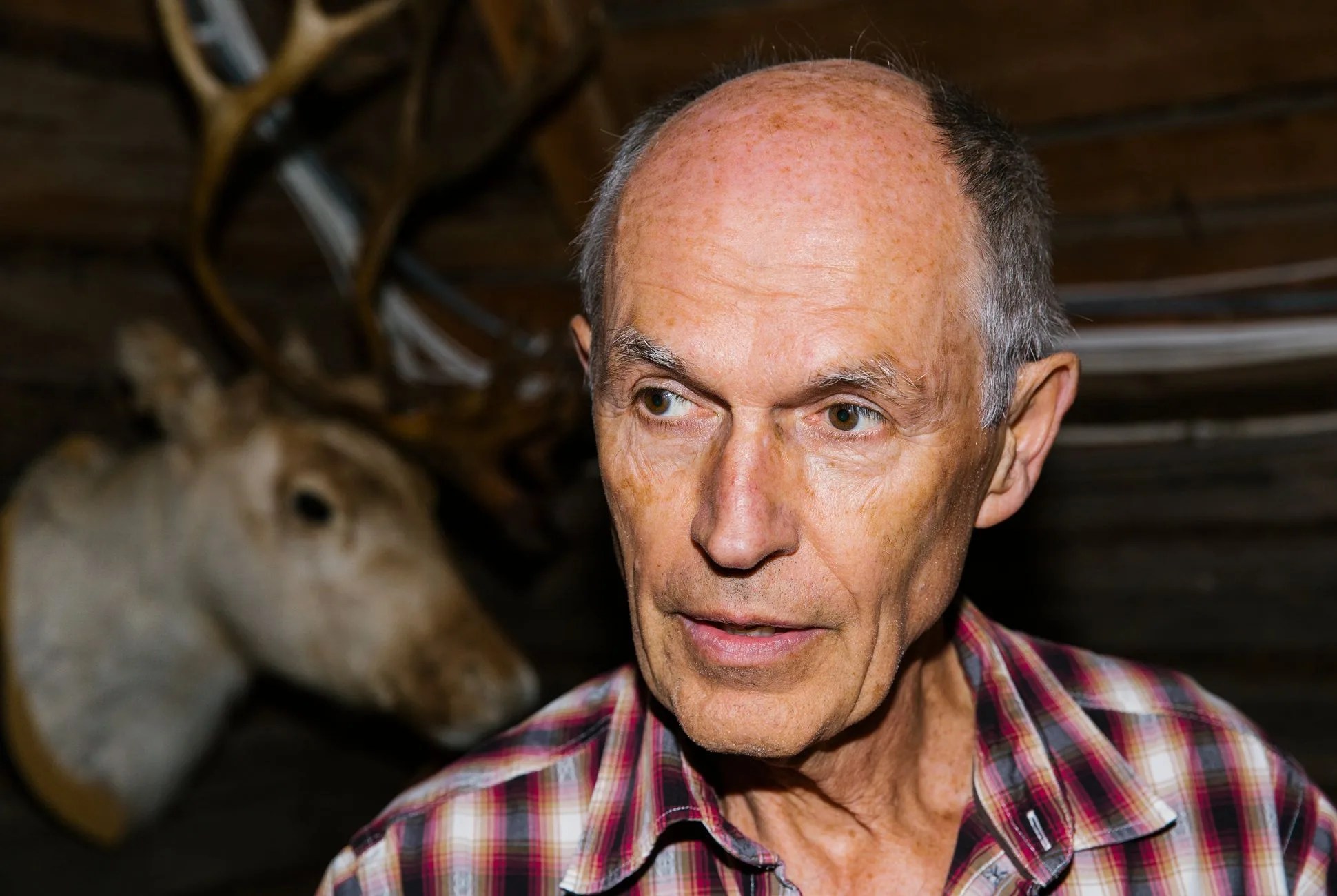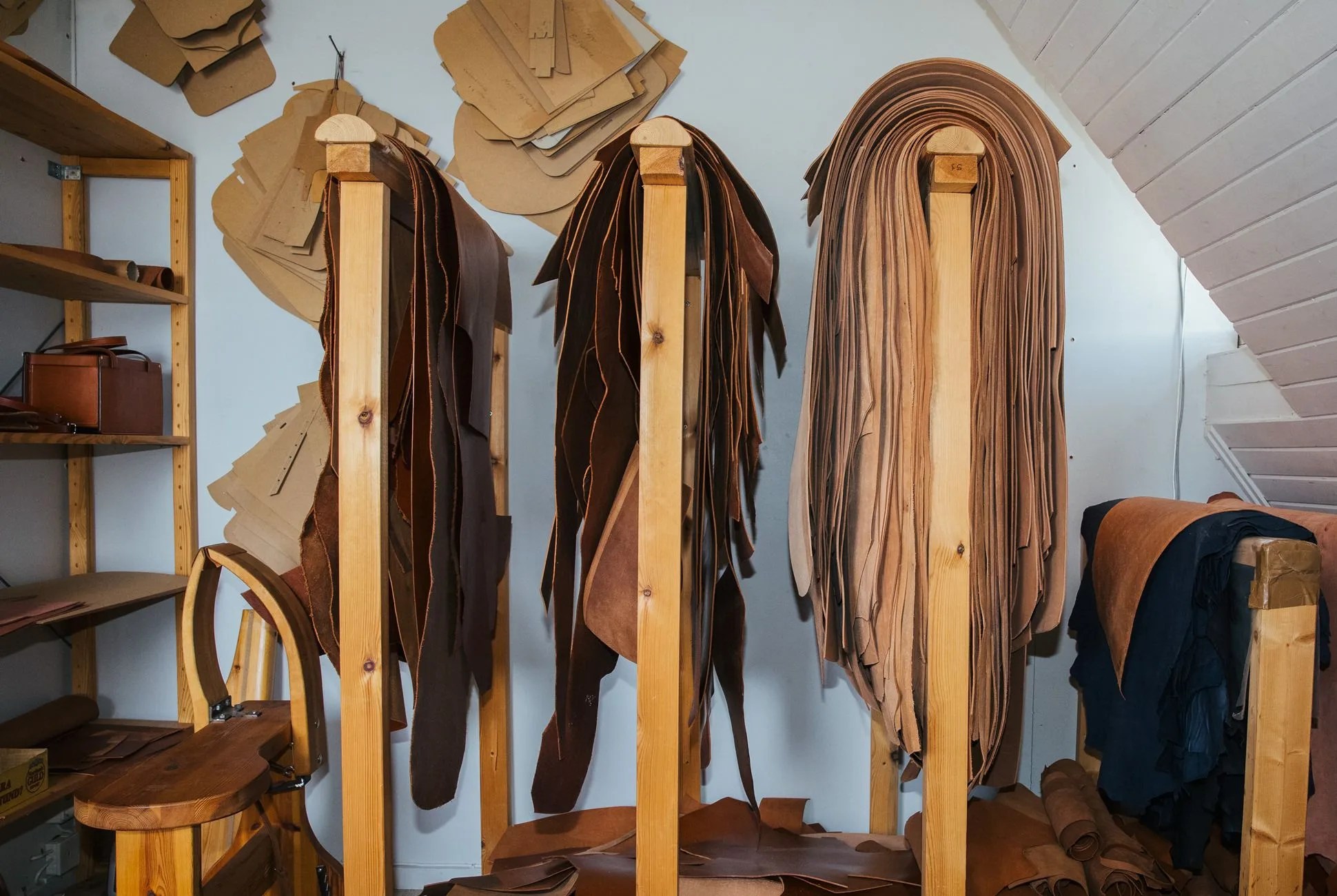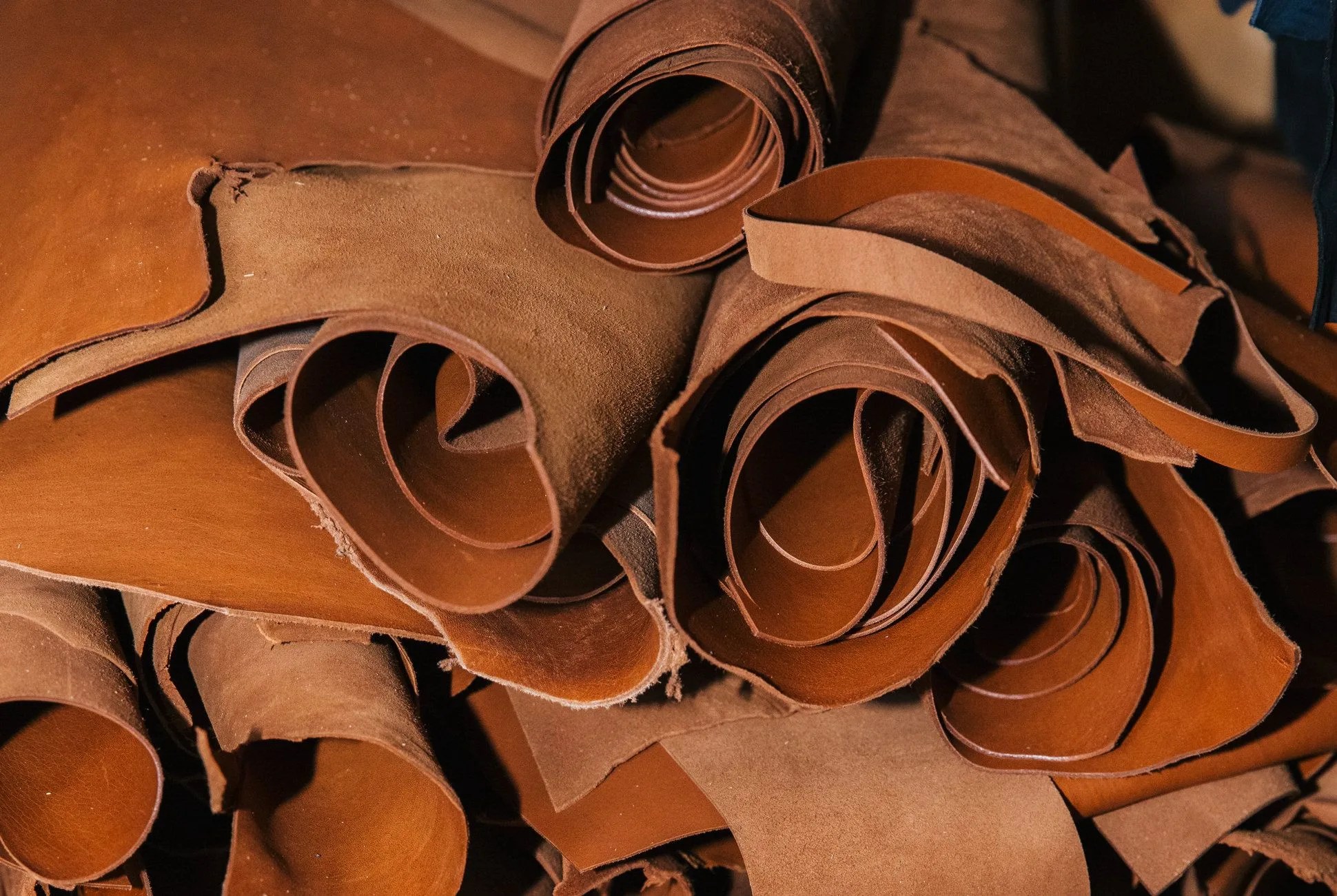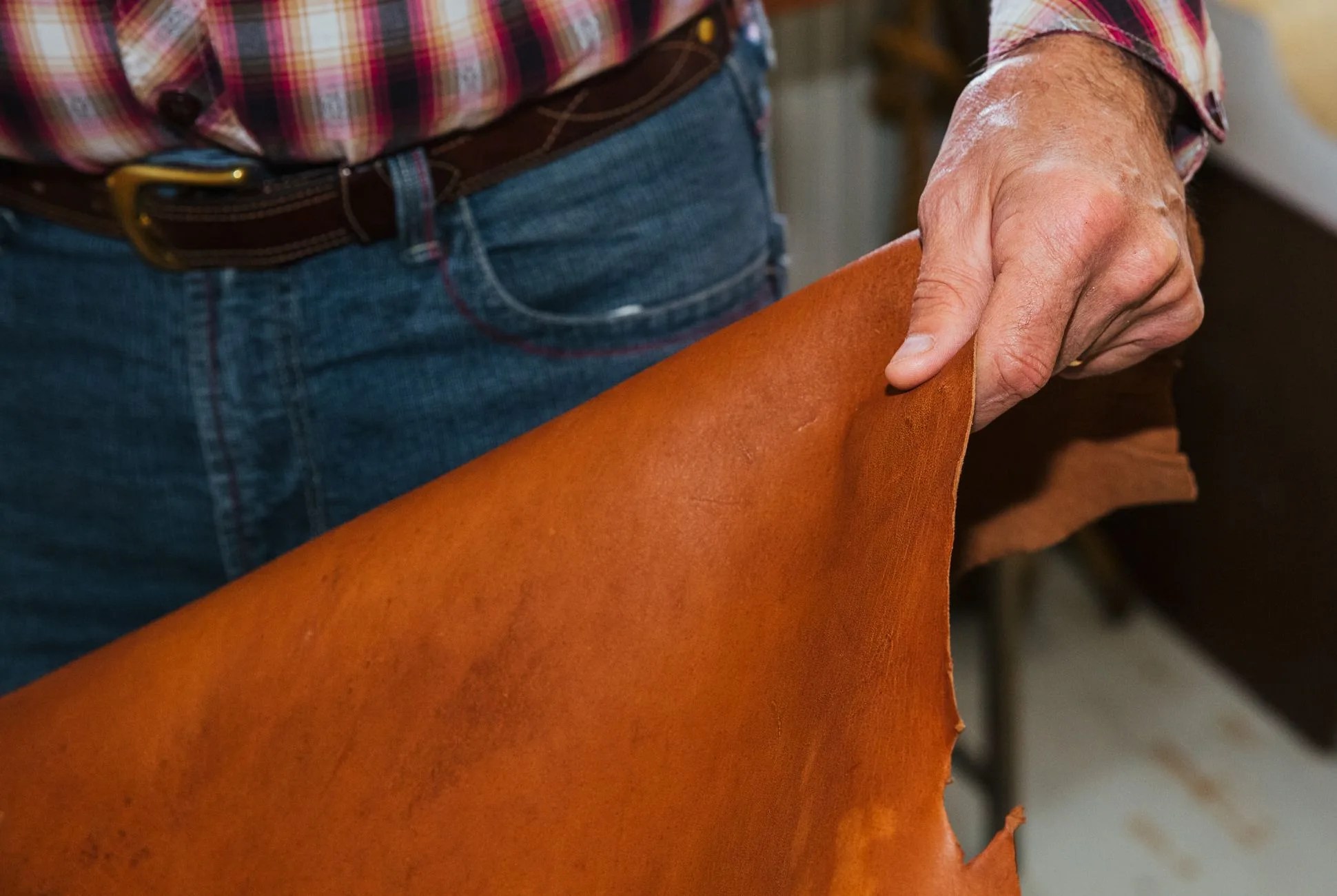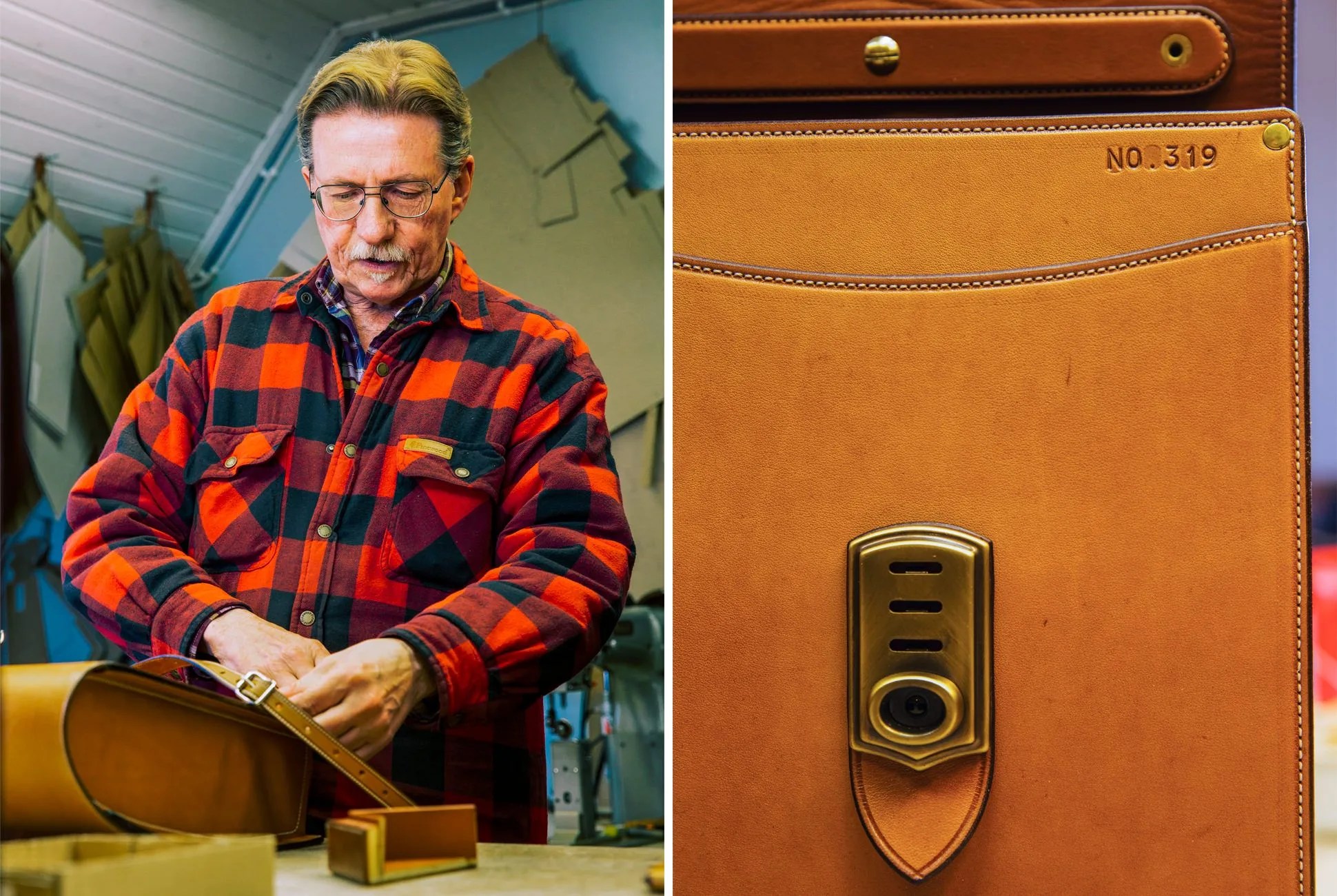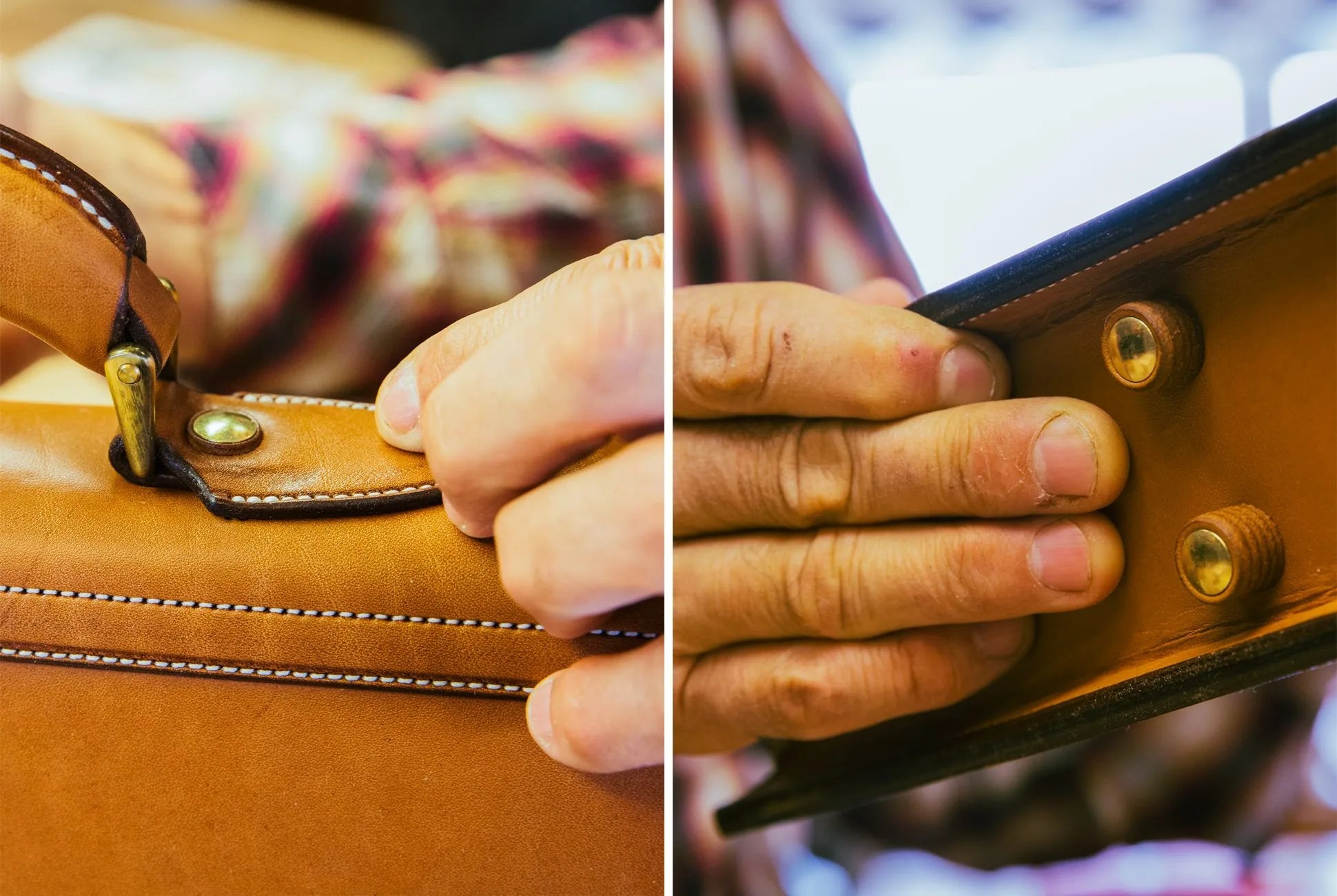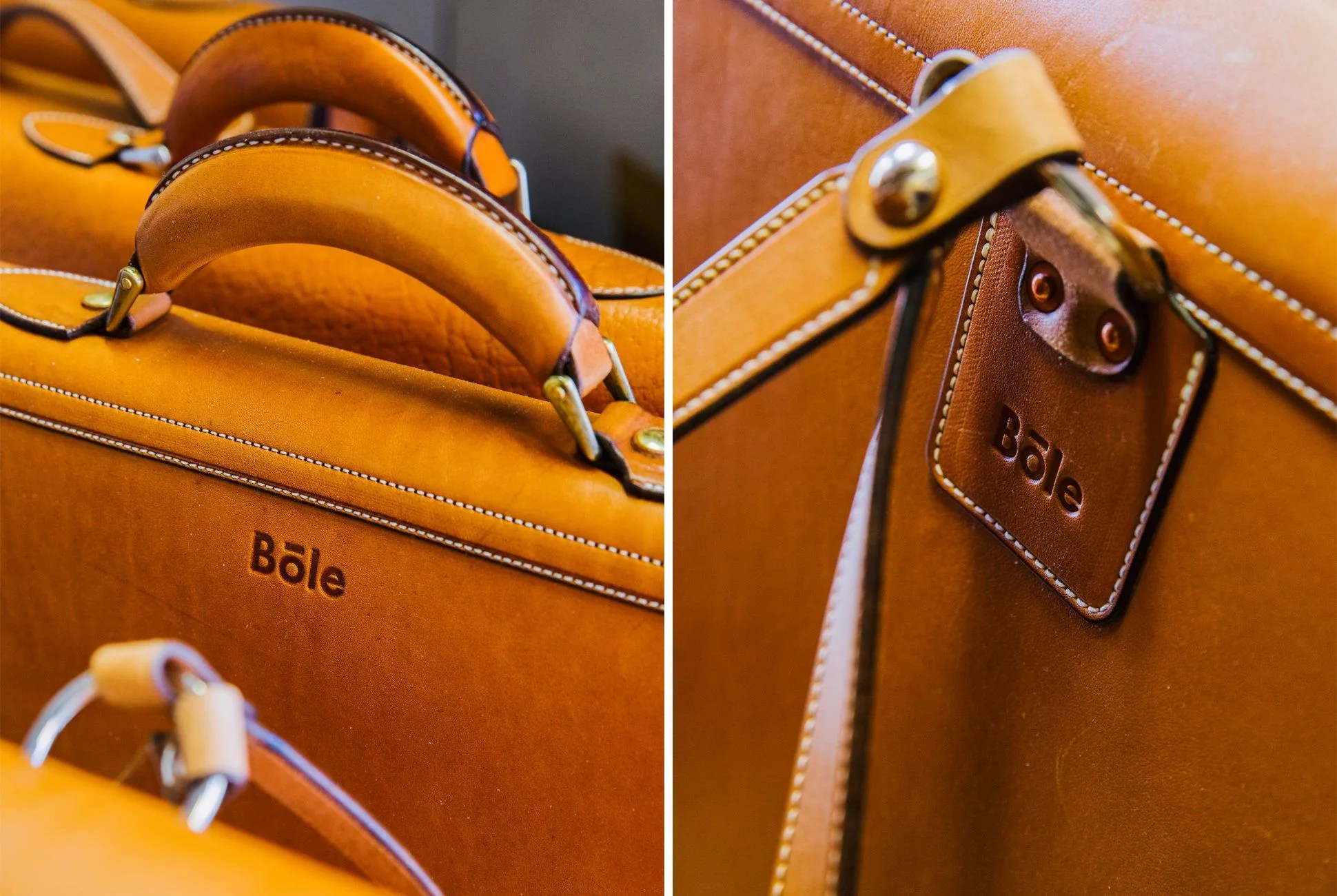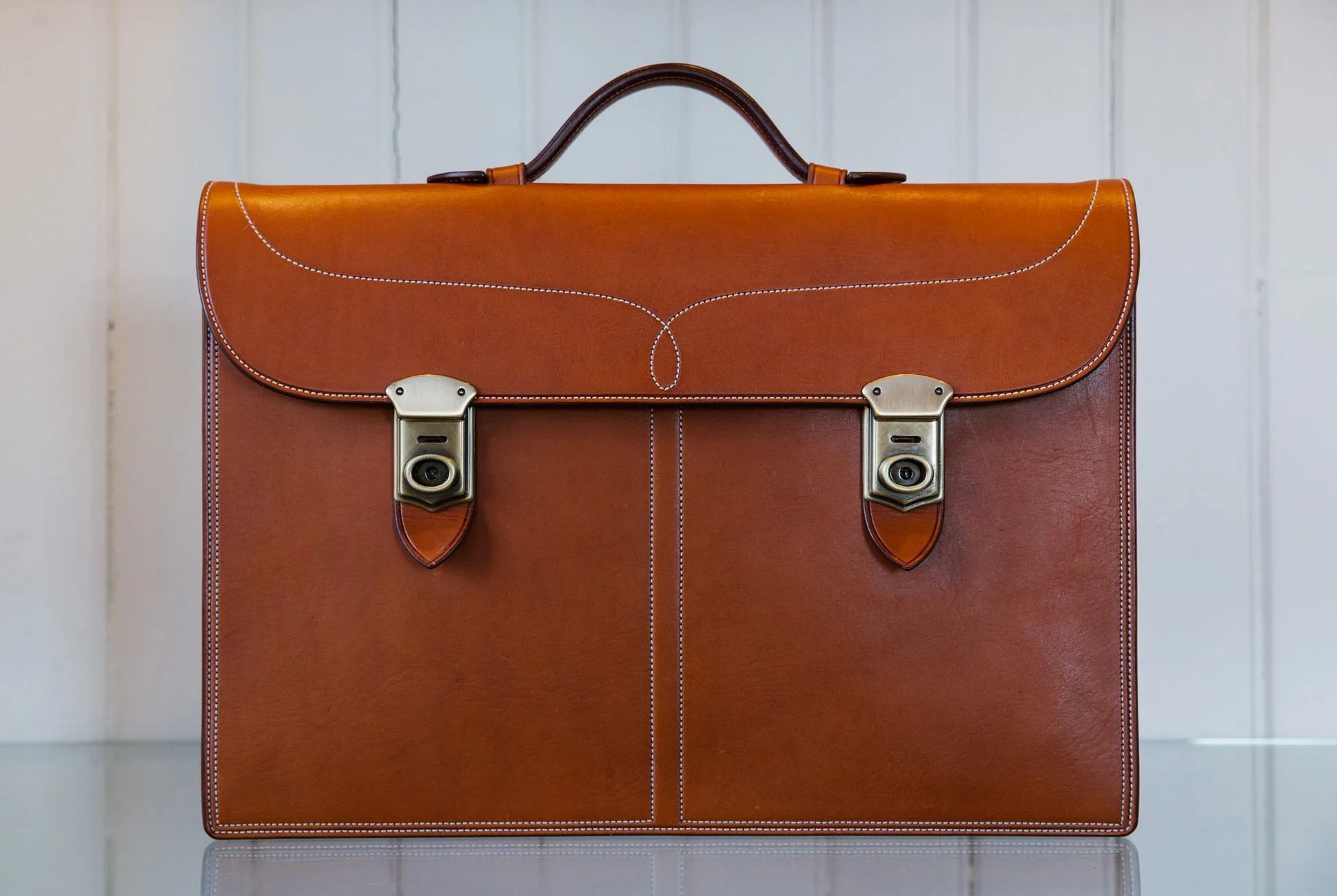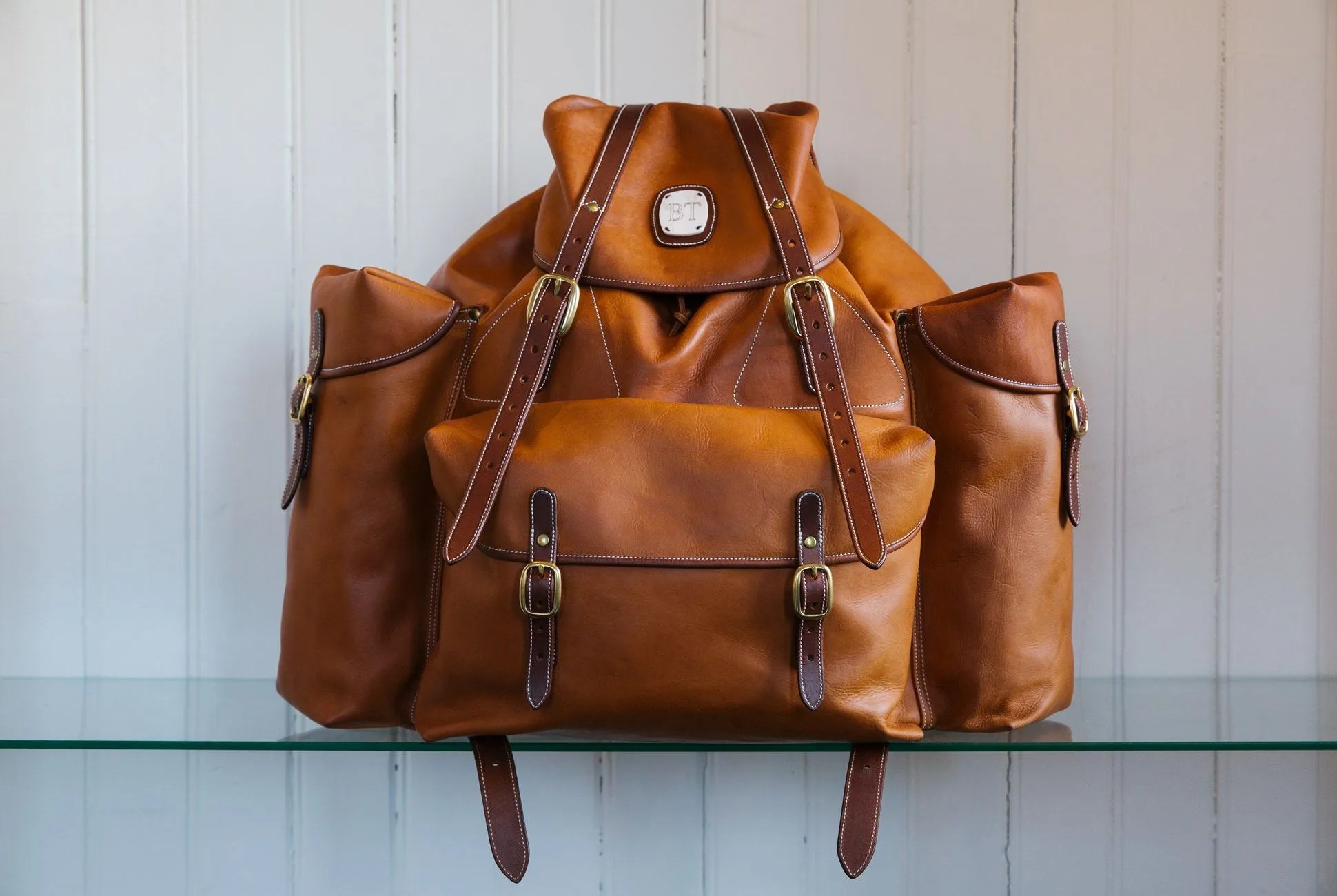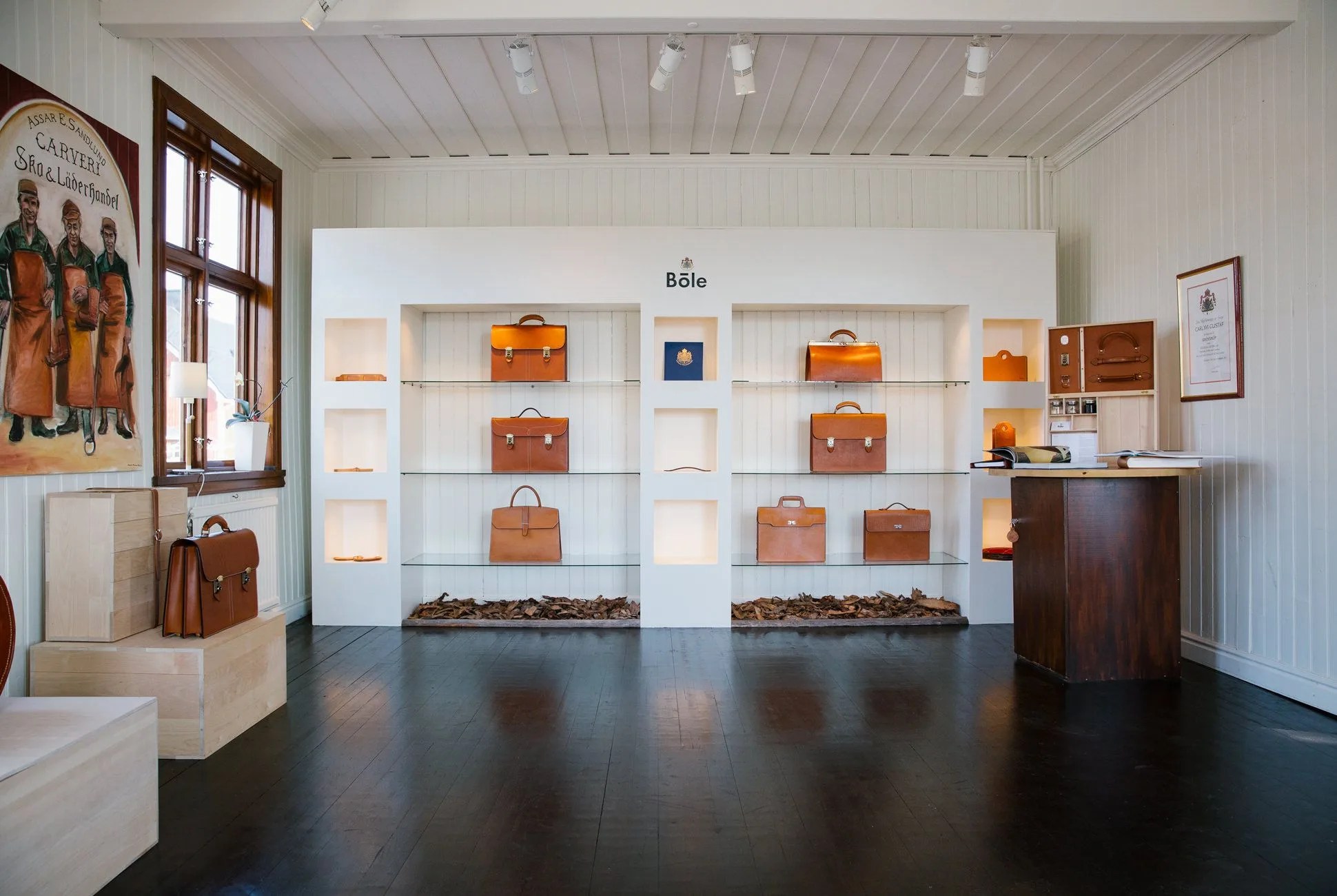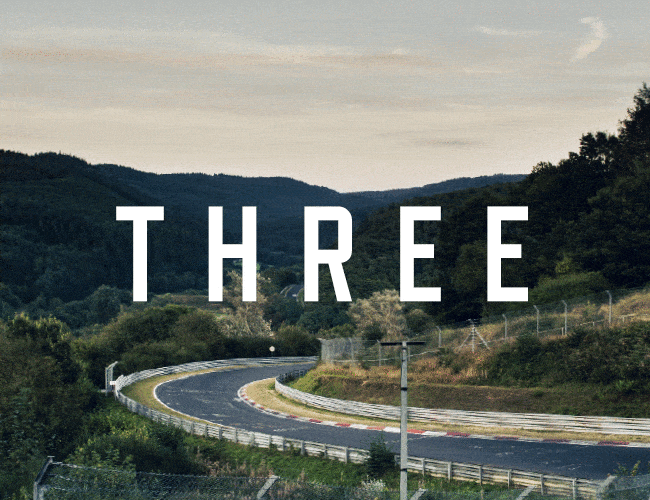16 photos
From Issue Three of the Gear Patrol Magazine.
Free domestic shipping + 15% off in the GP store for new subscribers.
“You’re not paying for the briefcase,” Jan Sandlund said, holding his father’s briefcase in the retail section of his leather shop in northern Sweden. “You’re paying for the history. You pay for the history and the briefcase comes free.” Sandlund is a third-generation leather craftsman at Böle Tannery, one of only three spruce-bark leather tanneries left in the world, and the only one that produces consumer goods.
The shop, located on the Pite River, just upstream from the small city of Piteå, has occupied the same building since 1918. It’s a barn-like structure, built by hand in the post-and-beam style. On the first level sit 14 vats, each dug roughly four feet into the ground beneath the floorboards. The vats are filled with water from the Pite River, which originates in lakes fed by the snowmelt from Norrland’s mountains. Added to the water are varying amounts of harvested spruce bark. “You have to take the bark in the springtime when the sap goes up in the trunk, because then it contains more sugar,” Sandlund noted. Over time, the sugar ferments into acid, which lowers the pH levels and aids in the tanning process. Sandlund recounted how when he was a boy, his father and grandfather harvested the spruce bark by hand.
Sandlund is a third-generation leather craftsman at Böle Tannery, one of only three spruce-bark leather tanneries left in the world.
Machines now assist with the labor-intensive harvest, but the process of tanning the hides remains completely man-powered. Workers move the hides from vat to vat as they gain color, and the spruce-bark solution is stronger in each subsequent vat. By the time the hides are ready to be stretched and dried, they’ve soaked in the solution for around twelve months. The results are worth the wait. The hides, once fully tanned, are a rich caramel color — a beautiful, natural hue. Böle does not use chromium or add artificial dyes. It’s possible to pull a hide straight out of the vat and bite into it with no ill effects, which Sandlund is keen to demonstrate.
Once the hides dry, workers move them to an upstairs loft where master saddle maker Billy Larsson takes custody. Larsson, a self-taught saddle maker, one of the finest in the world, started working at the tannery more than 30 years ago. He stitches each piece into place by hand, slowly constructing his made-to-order masterpieces. His workspace is meticulously organized, with all tools — punches, awls, hammers, knives and needles — strategically placed.
